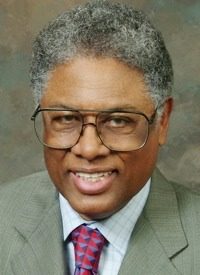
Those who are truly optimistic hope that Democrats and Republicans will both put aside their partisanship and do what is best for the country.
Almost nobody seems to be hoping that the government will leave the economy alone to recover on its own. Indeed, almost nobody seems at all interested in looking at the hard facts about what happens when the government leaves the economy alone, compared to what happens when politicians intervene.
The grand myth that has been taught to whole generations is that the government is “forced” to intervene in the economy when there is a downturn that leaves millions of people suffering. The classic example is the Great Depression of the 1930s.
What most people are unaware of is that there was no Great Depression until after politicians started intervening in the economy.
There was a stock market crash in October 1929 and unemployment shot up to 9 percent — for one month. Then unemployment started drifting back down until it was 6.3 percent in June 1930, when the first major federal intervention took place.
That was the Smoot-Hawley tariff bill, which more than a thousand economists across the country pleaded with Congress and President Hoover not to enact. But then, as now, politicians decided that they had to “do something.”
Within 6 months, unemployment hit double digits. Then, as now, when “doing something” made things worse, many felt that the answer was to do something more.
Both President Hoover and President Roosevelt did more — and more, and more. Unemployment remained in double digits for the entire remainder of the decade. Indeed, unemployment topped 20 percent and remained there for 35 months, stretching from the Hoover administration into the Roosevelt administration.
That is how the government was “forced” to intervene during the Great Depression. Intervention in the economy is like eating potato chips: You can’t stop with just one.
What about the track record of doing nothing? For more than the first century and a half of this nation, that was essentially what the federal government did — nothing. None of the downturns in all that time ever lasted as long as the Great Depression.
An economic downturn in 1920-21 sent unemployment up to 12 percent. President Warren Harding did nothing, except for cutting government spending. The economy quickly rebounded on its own.
In 1987, when the stock market declined more in one day than it had in any day in 1929, Ronald Reagan did nothing. There were outcries and outrage in the media. But Reagan still did nothing.
That downturn not only rebounded, it was followed by 20 years of economic growth, marked by low inflation and low unemployment.
The Obama administration’s policies are very much like the policies of the Roosevelt administration during the 1930s. FDR not only smothered business with an unending stream of new regulations, he spent unprecedented sums of money, running up record deficits, despite raising taxes on high income earners to levels that confiscated well over half their earnings.
Like Obama today, FDR blamed the country’s economic problems on his predecessor, making Hoover a pariah. Yet, 6 years after Hoover was gone, and nearly a decade after the stock market crash, unemployment hit 20 percent again in the spring of 1939.
Doing nothing may have a better track record in the economy but government intervention has a better political record in getting presidents re-elected.
People who say that Barack Obama cannot be re-elected with unemployment at its current level should take note that Franklin D. Roosevelt was elected a record four times, despite two consecutive terms in which unemployment was never as low as it is today.
Economic reality is one thing. But political impressions are something very different — and all too often it is the political impressions which determine the fate of an administration and the fate of a nation.
To find out more about Thomas Sowell and read features by other Creators Syndicate columnists and cartoonists, visit the Creators Syndicate Web page at www.creators.com. Thomas Sowell is a senior fellow at the Hoover Institution, Stanford University, Stanford, CA 94305. His website is www.tsowell.com.
COPYRIGHT 2011 CREATORS.COM


